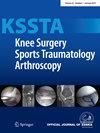A new parameter in the era of robotic total knee arthroplasty: Coronal alignment at 90° of flexion impacts clinical outcomes
Abstract
Purpose
Alignment strategies in total knee arthroplasty (TKA) have predominantly emphasized coronal alignment in extension, with minimal focus on dynamic alignment during flexion. This study aims to identify the predictors of the intraoperative robotic hip–knee–ankle angle at 90° of flexion (rHKA-90F) and assess its clinical significance in postoperative outcomes, proposing that rHKA-90F may be a critical factor in enhancing functional results in TKA.
Methods
A retrospective analysis was conducted on 180 patients with varus deformity undergoing robotic-assisted TKA under the functional alignment principles. Clinical outcomes were assessed using the Knee Society Score (KSS), Forgotten Joint Score (FJS-12) and Kujala Anterior Knee Pain Scale (AKPS) score. Predictors for final rHKA-90F and its intraoperative changes were identified using multiple linear regression models. Initial and intraoperative robotic measurements were also analyzed.
Results
Significant predictors of the final rHKA-90F included femoral rotation, tibial varus/valgus alignment, initial rHKA-90F and the final robotic axis in extensions. Patients with a final rHKA-90F ≥ 5° of varus demonstrated superior KSS function and KSS knee compared to those with a final rHKA-90F between 0° and 4° of varus. Furthermore, patients with intraoperative changes of rHKA-90F > 2.5° neutralization (varus reduction or with a valgus value) achieved better FJS and AKPS score.
Conclusions
This study highlights the clinical relevance of rHKA-90F as an intraoperative tool in robotic knee arthroplasty, emphasizing the need to balance the correction of varus deformity with the maintenance of slight varus alignment in flexion. Personalized alignment strategies tailored to patient-specific anatomy and kinematics are crucial to optimizing outcomes. There is still a need for future research on the long-term effects of dynamic alignment.
Level of Evidence
Level III.






 求助内容:
求助内容: 应助结果提醒方式:
应助结果提醒方式:


